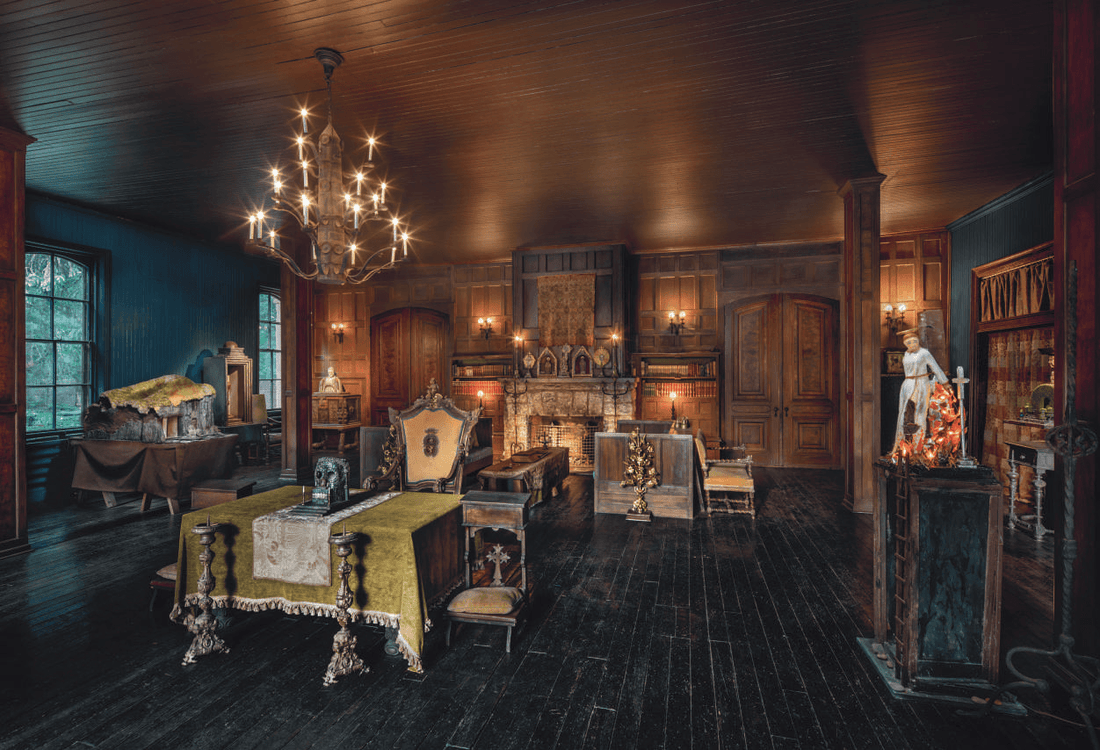First published: Winter 2021/22
In 2018, photographer Fred Charles took some pictures of an extraordinary home. They were stunning: jewel-box interiors, staged like theatre sets and filled with mysterious objects; a subterranean doll’s house; a painted bust of a bird-woman; exquisite dioramas of tombs and bleak miniaturised scenes devoid of inhabitants. And, in a few photos, their creator – a stately, costumed woman in her nineties, smiling wryly – Barbara Clark Denyer.

The Venetian Bedroom, with The Lottery on the table, and Infant of Prague on the wall on the left, photo: © 2020 Frederick Charles
Denyer had been creating her art in private for 60 years. When she died in 2020, aged 95, she left behind an astonishing body of work and the question of how to preserve it.
The house sits in a cul-de-sac in Irvington, New York, a village on the Hudson River about 25 miles north of Manhattan. Converted from the 1868 carriage house of a now-demolished Victorian estate, it is a masterpiece, with a multi-coloured, slate tile roof and an interior panelled in dark wood reminiscent of Anne Boleyn’s Hever Castle. The main hall is its showpiece, and features an enormous fireplace, symmetrically aligned velvet sofas, and – scattered throughout – Denyer’s works.

Red Tailed Hawk, 2015, plaster, wire, acrylic paint, wood, mixed media, plinth: antique furniture, 29 x 60 x 18 in. / 73.5 x 152.5 x 45.5 cm, photo: © 2020 Frederick Charles
The house looks “staged”, as though it were up for sale and ready for potential buyers, but her daughter Lauri Marder says this is exactly how it was when Denyer lived there. It is a stage set, but one that her mother had been building and performing in for over six decades.

The main hall, with An Altar to Vanity on the table in the foreground, photo: © 2020 Frederick Charles
An Altar to Vanity (1976) sits on an old refectory table (Denyer never used conventional pedestals or frames to display her work, instead incorporating them into furniture that she often salvaged from religious institutions). While the mosaic-tiled skull is close to lifesize, the tiny stairs leading up to it imply that it is a scale model: some kind of Mesoamerican altar to human sacrifice, or perhaps a maquette for a set design for some unspeakable gothic horror. Who or what is being sacrificed to vanity? This disorienting play on scale, in combination with chthonic violence, is evident throughout the artist’s work.
by KATHARINE GATES
This is an article extract; read the full article in Raw Vision #109




